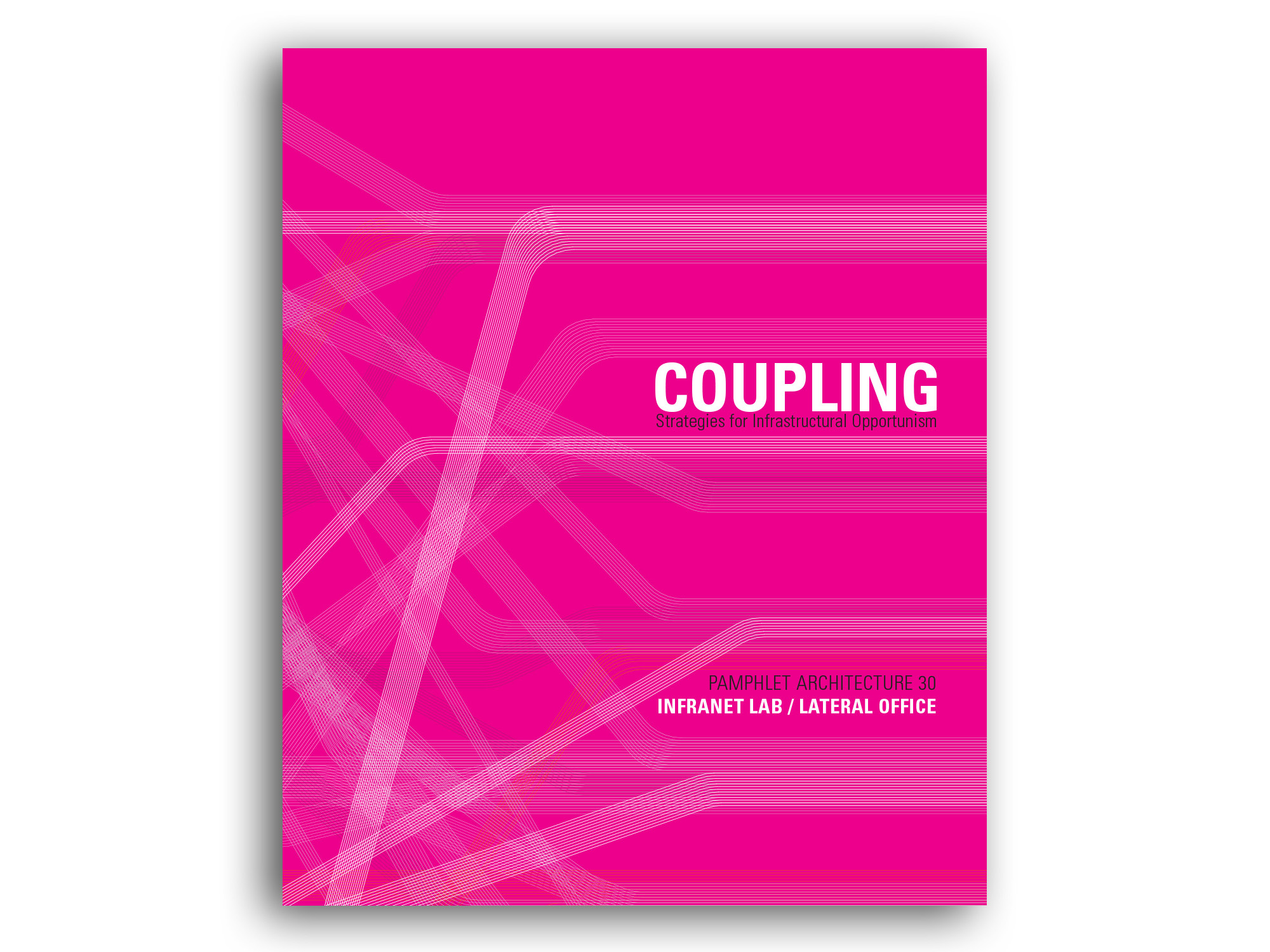The 20th century was witness to both an infrastructure boom and bust. It is the 21st century that will need to project not only how to address crumbling, insufficient, and ineffective infrastructure, but also how to position new infrastructures that confront urgent issues of climate change, sustenance inequality, and environment degradation. The globe’s networked ecologies of food, water, energy, and waste require new infrastructures and forms of urbanism. Coupling strategizes new formats for the physical infrastructure required in the wake of these shifting conditions. Coupling argues, through a body of design/research proposals, that infrastructures are in fact ecologies, or natural systems artificially maintained and calibrated. The opportunity for projecting a future infrastructure lies in embracing this condition in a more inclusive manner by bundling multiple processes with spatial experiences. The intention is to declare infrastructures as soft systems, adaptive and responsive to environments and use. Rather than a New Deal approach of massive engineering or iconic infrastructure, Coupling employs adaptable, responsive, small-scale interventions that operate at a massive territorial scale. Easily replaced or upgraded, these infrastructures double as landscape life support, creating new sites for production and recreation. The ambition is to supplement ecologies at risk rather than overhaul them. The included projects overlay existing landscapes with emergent systems to catalyze a network of ecologies and economies for a new public realm.
Reviews
“In many respects Coupling defines an architectural vision (or one architectural vision) of the 21st century, merging an expanded view of the architect’s role with the increased scope and opportunities that new data provides design practice. In a time when Daniel Burnham’s addage of “make no small plans” seems almost naive in the wake of economic collapse, Coupling argues that going big or going home is the only way forward in a new landscape of information driven architecture.” — thefunctionality.com
“The 30th installment in this canonical series is thankfully a great one, authored by Lateral Office and InfraNet Lab, a design firm and its attendant research blog that I’ve been following for many years….It’s a solid pamphlet, both practical and imaginative–made even more provocative by its implied feasibility–and a fantastic choice for the 30th edition of this long-running series.” –BLDG BLOG






